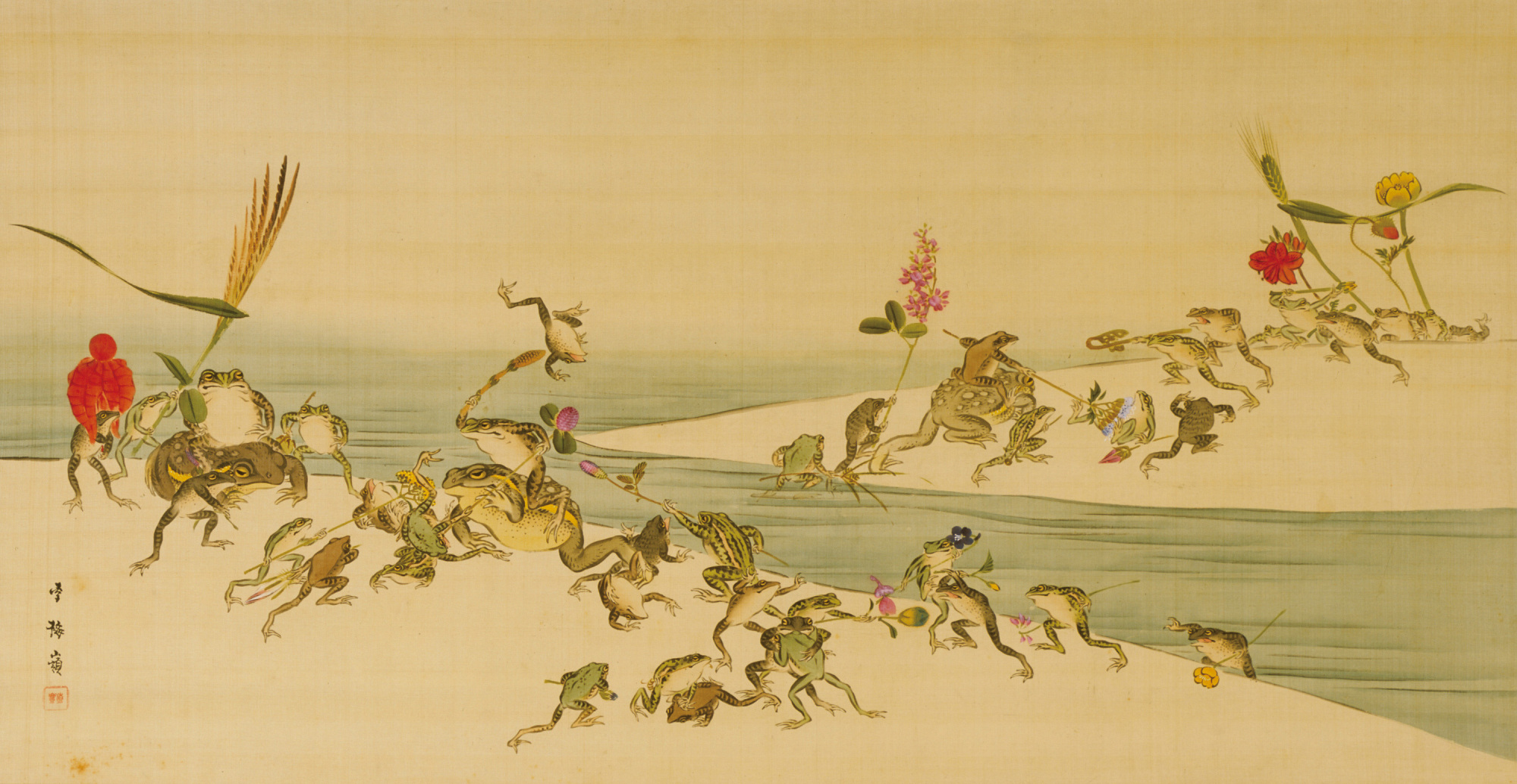The focus of "The 150th Anniversary of the Meiji Period: Making and Designing Meiji Arts and Crafts" at The National Museum of Modern Art, Kyoto, concerns the relationship between nihonga (Japanese-style) painters of Kyoto and craft production during a time when craft and design were part of the government's national strategy for the pursuit of economic benefits. The exhibition also touches on the late 19th century's national and international expositions, craft masterpieces of the time, and innovations introduced by the German chemist, Gottfried Wagener (1831-1892). It was Wagener's underglaze painting techniques that achieved the gradation effects of traditional painting on Asahi ware ceramics, such as that of the displayed "Tiles with Grapes Design in Underglaze" (1890-1896).
When Kishi Chikudo (1826-1897) was commissioned to provide designs for stencil-dyed yūzen fabrics, this initiated the beginning of modern nihonga's relationship with Kyoto's textile industries. He provided a lavish peony, lotus and plum blossom design for crepe silk production in 1874, on display today. From early on, the painters Kishi, Kono Bairei and Imao Keinen were prominent in producing new designs for Meiji Era (1868-1912) crafts, though they drew upon Edo Period (1603-1868) decorative traditions, painting subjects of birds, flowers and marine life. Such themes became integral to establishing Japan's international artistic reputation after the country's first formal participation in world fairs, the 1873 Vienna International Exposition.
Painting designs and sketches for use by artisans in works primarily created for export were published in the form of a portfolio titled "Onchizuroku" (1881). This widely consulted source provided at least general directions, if not complete artistic programs, for Ishii Yusuke II's "Shelf with Design of Auspicious Symbols in Yusuke-style Lacquer" (c. 1881), and Kawamoto Masukichi I's "Facet-cut Vase with Underglaze Enamels" (1881).



















With your current subscription plan you can comment on stories. However, before writing your first comment, please create a display name in the Profile section of your subscriber account page.